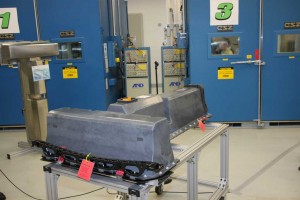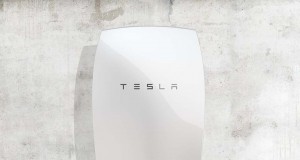While battery-car sales have been growing at a slower pace than proponents have projected, that still means more than 100,000 new battery packs will be put on the road in the U.S. this year. What to do with them when those vehicles are ready to be scrapped has become an increasingly big concern.
General Motors will announce plans next Tuesday that would create new uses for old batteries. The maker isn’t tipping its hand, but previously had hinted at applications that could include using recycled batteries from its Chevrolet Volt plug-in hybrid for power utility back-up systems.
The announcement will come just before GM begins production of a second-generation Volt for the 2016 model-year. The maker also is readying an all-new electric vehicle, the Chevrolet Bolt, which will be powered by roughly twice as many batteries as most pure EVs on the road today.
GM has been working with both Duke Energy, a major energy provider, and electric grid equipment manufacturer ABB Group on ways to reuse the lithium-ion batteries in its electric vehicles. That’s “the Holy Grail,” Duke’s technology project manager Dan Sowder said during a 2012 joint news conference, because it could “help enable the safe and reliable integration of renewable energy into the grid.”
During that event, GM and its partners showed off a prototype system that packed a number of old Volt batteries together to serve as a grid backup and leveling system. It could serve four or more homes at one time, both reducing demand on the grid during times of peak demand and providing a steady flow of power even in the event of a regional blackout.
(Plugging in on Pecan Street. Austin neighborhood explores it battery and battery-car options. Click Here for the story.)
GM, Duke and ABB also raised the possibility of creating entire “farms” of old batteries that could serve a factory, a shopping center, or even an entire neighborhood.
While lithium-ion batteries slowly degrade over time and under use, experts forecast that a pack like the one used in the current Chevy Volt will likely still maintain at least 70% of its original capacity after a decade, about the time the plug-in hybrid would likely be scrapped. In some cases, the batteries could be reconditioned to boost that capacity.
Such batteries would be cheaper than using entirely new lithium-ion packs, which currently cost at least $400 per kilowatt-hour – though that price has been falling as production volumes increase.
In fact, Tesla Motors hopes to drive lithium battery prices down to $200 a kWh or less as it ramps up production at the Gigafactory it is now erecting in Reno, Nevada. The facility will become the world’s largest LIon battery producer before the end of the decade, Tesla has stated.
(Panasonic sending “100s” of workers to Reno to help Tesla launch its Gigafactory. Click Here for the latest.)
The California-based automaker’s new Tesla Energy division recently revealed its new Powerwall energy storage system that offers an alternative to noisy and polluting backup generators for home and business use. Tesla this week announced it would double the size of the batteries in the Powerwall unit, bowing to consumer demand.
Other automakers, notably including Nissan – which produces the top-selling electric vehicle, the Leaf – also are exploring new uses for old batteries.
(Click Herefor more on the Tesla Powerwall system.)



Until they can actually do what they hope to do, i.e. recycle Li-ion batteries for off-grid back-up power or lower the price to less than $200 kWh, it’s all just talk.
Ten year old Li-ion batteries are not going to be able to provide 70% of their original rated power for long before they bite the dust. The price would need to be dirt cheap for these used batteries and then you still need to process them once they are finally dead.
So the battery repurposing program is really just a delay of a few years at best. Then you must still deal with the real problem of toxic waste. This really isn’t a solution at all. Recycling the batteries like lead acid batteries are recycled would be far better.
Since its all talk according to some. Knowing the properties of Lithium batteries changes the dynamics versus lead acid batteries. With tesla batteries and nissan and GM also, the size of the batteries production economics changes what has been avalable on a large scale through present distrbution.
As with increasing avaliablity the used market dynamics change since lithium doesn’t reguire the same maintaince hence the longer life.
Of lead acid, and the charging controlled by c computer eliminates even more, hence even longer life. By changing the medium, meaning the liquid acid to a mixture of solvents one can increase battery life. Since 18650 batteries compose the tesla battery as with laptop batteries rebuilding could become a local business.
They could use the spent batteries as boat anchors.
They could entomb the EPA and DOE with them that are kicking this environmental toxic disaster
down the road by allowing these things and worse subsidizing them during a shale oil boom
lion batteries are far more detrimental than hydrocarbons from shale oil production and use
and this re use plan just buys time for the loons that proposed it .